CAA News Today
News from the Art and Academic Worlds
posted by Christopher Howard — May 31, 2017
Each week CAA News summarizes eight articles, published around the web, that CAA members may find interesting and useful in their professional and creative lives.
How a $25,000 NEA Grant Became a Springboard for Change in a Rural Minnesota Community
A grant of $25,000 is not even a drop in the bucket of the US federal government’s spending, but it effected visible change in Fergus Falls, a small rural community in Minnesota with a population of 13,000, which received that dollar amount from an NEA grant in 2011. (Read more from the Art Newspaper.)
Is It Time for an Arts Think Tank Yet?
Two or three organizations have taken up studies, research, and positions on arts and culture topics, but these have been isolated, occasional forays. There is no think tank that has as its principal charge the arts, humanities, creativity, culture, heritage, and other facets and divisions of the wider field of culture and creativity. (Read more from Barry’s Blog.)
After Protests from Native American Community, Walker Art Center Will Remove Public Sculpture
Less than a week before the Walker Art Center was scheduled to open its newly renovated sculpture garden, it announced that one of the major new works added to the park will be removed. The sculpture in question, Scaffold (2012) by the Los Angeles–based artist Sam Durant, is a giant structure made of steel and wood. (Read more from Hyperallergic.)
Discovered in a Lab, a New Superblue Has Been Unleashed upon the World as a Crayola Crayon
When the chemist Mas Subramanian accidentally discovered the brilliantly bright YInMn blue at Oregon State University in 2009, he had no idea the bold shade would one day be embraced by doodling schoolchildren everywhere. Now, the first new blue pigment discovered in two hundred years is poised to become part of your kid’s next Crayola crayon box set. (Read more from Artnet News.)
These Eight Zines by People of Color Show Why the Medium Has Remained Relevant
There has been a resurgence of print in the age of expeditious digital consumption. The popularity of zines today, however, should not be chocked up to nostalgia alone. Rather, the printed medium has long been a tool for political and social engagement among artists and writers of color. (Read more from Artsy.)
The Dissertation-to-Book Transition
Which aspects of a dissertation are most commonly tossed out when presented in book format? For instance, while most of my dissertation is written as a book, I reserved an entire chapter for methodology. I assume that section will be significantly condensed—if not scrapped altogether —as a book manuscript? (Read more from Vitae.)
Is Criticism Dead Yet? Does Anyone Care?
Remember not so long ago when the crisis of criticism was on everyone’s tongue? It was only a couple of years ago, but it seems like a lifetime. Panels were convened, postmortems performed. The consensus, as far as there was one, was that the internet killed criticism. (Read more from Glasstire.)
Spring 2017 Recipients of the Millard Meiss Publication Fund
posted by Christopher Howard — May 30, 2017
This spring, CAA awarded grants to the publishers of seven books in art history and visual culture through the Millard Meiss Publication Fund. Thanks to the generous bequest of the late Prof. Millard Meiss, CAA gives these grants to support the publication of scholarly books in art history and related fields.
The seven Meiss grantees for spring 2017 are:
- Mark Cheetham, Landscape into Eco Art: Articulations of Nature since the ’60s, Pennsylvania State University Press
- Justin Jesty, Arts of Engagement: Socially Engaged Art and the Democratic Culture of Japan’s Early Postwar, Cornell University Press
- Farhan Karim, Modernism of Austerity: Designing an Ideal House for the Poor, University of Pittsburgh Press
- Lynda Klich, The Noisemakers: Estridentismo, Vanguardism, and Social Action in Post-Revolutionary Mexico, University of California Press
- Mia Yinxing Liu, The Literati Lenses: Wenren Landscape in Chinese Cinema, University of Hawai’i Press
- J. P. Park, Conflicted Realities: Painting and Cultural Politics in Late Chosŏn Korea, University of Washington Press
- Øystein Sjåstad, Christian Krogh’s Naturalism, University of Washington Press
Books eligible for Meiss grants must already be under contract with a publisher and on a subject in the visual arts or art history. Authors and presses must be current CAA members. Please review the application guidelines for more information.
New in caa.reviews
posted by CAA — May 26, 2017
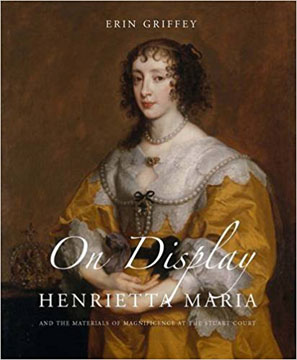 Sarah R. Cohen reads On Display: Henrietta Maria and the Materials of Magnificence at the Stuart Court by Erin Griffey. In this “meticulously researched” and “densely detailed” volume, the author argues that “early modern sovereigns, especially powerful woman such as Queen Henrietta Maria of England, projected their authority through the specific and calculated allure of their material luxuries.” Read the full review at caa.reviews.
Sarah R. Cohen reads On Display: Henrietta Maria and the Materials of Magnificence at the Stuart Court by Erin Griffey. In this “meticulously researched” and “densely detailed” volume, the author argues that “early modern sovereigns, especially powerful woman such as Queen Henrietta Maria of England, projected their authority through the specific and calculated allure of their material luxuries.” Read the full review at caa.reviews.
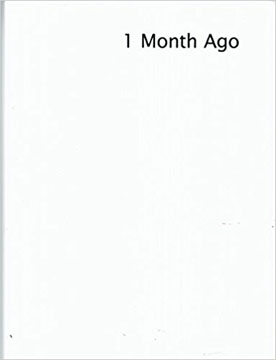 Paisid Aramphongphan reviews Wade Guyton’s One Month Ago, an artist’s book featuring the transposed contents of a Tumblr blog consisting “mainly of photographs of a variety of gay kink scenes.” The reviewer is “inclined to read the book as Guyton’s rebuke to the line of criticism that positions him as basking in the limelight without making a difference in the privileged art world of abstract paintings.” Read the full review at caa.reviews.
Paisid Aramphongphan reviews Wade Guyton’s One Month Ago, an artist’s book featuring the transposed contents of a Tumblr blog consisting “mainly of photographs of a variety of gay kink scenes.” The reviewer is “inclined to read the book as Guyton’s rebuke to the line of criticism that positions him as basking in the limelight without making a difference in the privileged art world of abstract paintings.” Read the full review at caa.reviews.
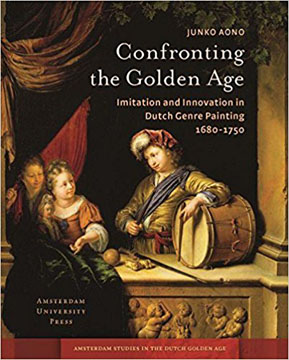 Ellis Dullaart discusses Confronting the Golden Age: Imitation and Innovation in Dutch Genre Painting, 1680–1750 by Junko Aono. The author aims “to investigate how artists working in the waning light of the Golden Age dealt with the illustrious artistic past,” and the book “delivers important insights” and “has the potential to revive interest in and appreciation for a long-neglected period in Dutch art history.” Read the full review at caa.reviews.
Ellis Dullaart discusses Confronting the Golden Age: Imitation and Innovation in Dutch Genre Painting, 1680–1750 by Junko Aono. The author aims “to investigate how artists working in the waning light of the Golden Age dealt with the illustrious artistic past,” and the book “delivers important insights” and “has the potential to revive interest in and appreciation for a long-neglected period in Dutch art history.” Read the full review at caa.reviews.
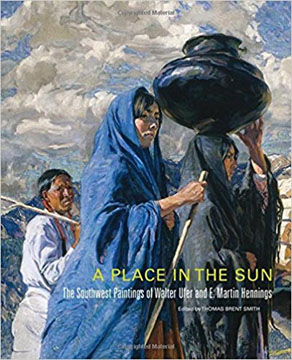 Betsy Fahlman examines the exhibition catalogue A Place in the Sun: The Southwest Paintings of Walter Ufer and E. Martin Hennings, edited by Thomas Brent Smith. Meticulously researched and “handsomely produced,” the volume “accomplishes the authors’ intention to restore these figures as artists of exceptional talent who were engaged with the significant art and historical issues of the day.” Read the full review at caa.reviews.
Betsy Fahlman examines the exhibition catalogue A Place in the Sun: The Southwest Paintings of Walter Ufer and E. Martin Hennings, edited by Thomas Brent Smith. Meticulously researched and “handsomely produced,” the volume “accomplishes the authors’ intention to restore these figures as artists of exceptional talent who were engaged with the significant art and historical issues of the day.” Read the full review at caa.reviews.
Southeast of Now: Introducing a New Journal about Contemporary and Modern Asian Art
posted by Chye Shu Wen, Publicity and Marketing Manager at National University of Singapore Press — May 25, 2017
One of the great challenges of our time is to make sense of the world on a global scale, even while facing ever more urgent concerns at various local levels. While artists, curators, critics, and scholars of art have embraced this challenge for some time now, the global discourse of contemporary and modern art remains stubbornly asymmetrical, with many contexts for discussion oriented to the North and the West, and also to the new and the now.
Southeast of Now: Directions in Contemporary and Modern Art in Asia was established by a collective of scholars and curators as a discursive space for creating encounters between critical texts of contemporary and modern art produced in, from, and around Southeast Asia. The editorial board includes researchers from Singapore, Thailand, Indonesia, Philippines, Australia, New Zealand, Cambodia, and Malaysia. It is presently the only scholarly journal dedicated to the recent art of this region.
 The journal presents a necessarily diverse range of views not only on the contemporary and modern art of Southeast Asia, but indeed of the region itself: its borders, its identity, its efficacy, and its limitations as a geographical marker and a conceptual category. As such, the journal is defined by a commitment to the need for and importance of rigorous discussion of the contemporary and modern art of the domain that lies south of China, east of India, and north of Australia.
The journal presents a necessarily diverse range of views not only on the contemporary and modern art of Southeast Asia, but indeed of the region itself: its borders, its identity, its efficacy, and its limitations as a geographical marker and a conceptual category. As such, the journal is defined by a commitment to the need for and importance of rigorous discussion of the contemporary and modern art of the domain that lies south of China, east of India, and north of Australia.
Why ‘Southeast’ of ‘Now’?
The title of the journal has a playful yet provocative function as a reminder that Southeast Asia is named, and to a large extent discursively defined, in relation to an imagined geographical center in the North and the West. It is also a reminder that discussions of contemporary and modern art are increasingly framed by an imagined temporal center: that of the now.
The lack of educational infrastructure of art history in most countries in Southeast Asia was one of the principal motivations behind the creation of the journal. Resisting the pressure to be always up-to-date and forever new, the journal instead values the historicizing of recent practices, from the nineteenth century (and before) to the present (and after). This historical perspective is a foundation for contributions which may otherwise draw on a diverse range of disciplines and methodologies.
Of Themes and Form(ations)
The playful disquiet evoked by the title of the journal, which troubles linear notions of space-time and destabilizes any certainty of an imagined temporal center, gave rise to the inaugural volume’s theme: Discomfort. The provocations that the Southeast of Now editorial collective sought included pieces that reflect on the burdens and future possibility of wielding “regionalism” as a framework. The editors hope to locate this source of tension and anxiety through various discourses and narratives. Texts published in the journal’s first issue suggest also the possibility to discover some comfort within unease, even if merely within shared discomfort.
One key feature of the journal is the inclusion of less academically-driven sections (‘Interview’, ‘Archive’, ‘Artists’ Projects’ and ‘Review’)—spaces the editors felt were necessary for creating discourses about contemporary and modern Southeast Asian art, and providing access to conversations that are already ongoing. It was important for them to create an open platform within the journal where they could create opportunities for artistic responses as well as scholarly articles. Many contemporary artists are engaged in artistic research and are eager to present their views in formats other than written texts, essays, or reviews.




Images from video interview with Pak Edhi Sunarso by Tom Nicholson and Grace Samboh
In Volume 1, Number 1, for example, the section titled Artists’ Projects features a video by Tom Nicholson and Grace Samboh, in which they documented their interview with Pak Edhi Sunarso, one of Indonesia’s most eminent sculptors. Southeast of Now is a fitting place where this kind of research material could travel beyond the site of the physical exhibition in which it was originally viewed, which was the Jakarta Biennale. Within the context of the journal it is not only an artwork to be experienced; it is also a primary source of research material about a valuable figure in Indonesia’s modern art history.
The structure of the journal also provides numerous curatorial possibilities. The Artists’ Projects pages offer a space for a specifically curated sequence of images or texts, either by a member of the editorial collective, a guest curator, or a respondent to a call for proposals. This follows new approaches to publishing where printed matter may be considered as an exhibition format in two-dimensional form. In future issues the editors will alternate such presentations with archival pages from various collections within and beyond the region, as well as translations and other resources.
The Art of Re/De-Categorizing
Southeast of Now effectively aims to be a platform where the categories of “contemporary and modern art,” indeed of “art” in general, as much as the category of “Southeast Asia” itself, will always be open for debate. The editors anticipate continuous challenges in redefining these categories, by looking at aspects of culture that do not usually qualify as “art,” by treating the region’s borders as fluid, and also by looking at research that transcends these borders.
The journal strives to remain committed to the importance of an historical approach, however interwoven with methodologies from other disciplines and practices. The editors hope that future issues of the journal will look further back in time, to the nineteenth century (and before) with the goal of placing the historical research in dialogue with issues of today.
****
The journal is published by the National University of Singapore Press and it is published twice a year (March and October), in print and online via Project MUSE.
To find out more about submission guidelines and subscription information, visit www.southeastofnow.com or the National University of Singapore Press website.
Images from video interview with Pak Edhi Sunarso by Tom Nicholson and Grace Samboh
News from the Art and Academic Worlds
posted by Christopher Howard — May 24, 2017
Each week CAA News summarizes eight articles, published around the web, that CAA members may find interesting and useful in their professional and creative lives.
Modern African Art Is Being Gentrified
I am tempted to think of contemporary African art as akin to an urban neighborhood undergoing gentrification. Now that it is high culture, investors are jostling to get a piece of the action, and private collections are growing in Africa and around the world. This is very good news for the African modernists who will benefit from the increased visibility. (Read more from the New York Times.)
The States Where Campus Free-Speech Bills Are Being Born
Last week Tennessee’s governor signed into law a measure that the Foundation for Individual Rights in Education called “the most comprehensive state legislation protecting free speech on college campuses that we’ve seen passed anywhere in the country.” That new law, among other things, bars public colleges from establishing “free-speech zones” and requires them to adopt broad statements of support for free expression. (Read more from the Chronicle of Higher Education.)
Agnes Gund on Diversity in the Art World and the Future of MoMA
In addition to helping museums like MoMA and the Met keep their doors open, Agnes Gund has also been devoted to increasing the diversity of the people who walk through those doors, by funding avenues for art education that reach beyond the halls of private schools to less privileged students who don’t have the same elite cultural access. (Read more from Artnet News.)
Why Can’t the Art World Embrace Robert Rauschenberg’s Queer Community?
Like Merce Cunningham and John Cage, Robert Rauschenberg found beauty in everyday objects. Through close observation, the quotidian could bloom into something either sublime or subversive. This is a tenet of queer art, the ability to transform normativity into the unexpected. (Read more from Artsy.)
On Not Writing a Book Right Now
I recently stumbled across a 2016 Paris Review essay about Robert Caro that notes, “If there is a question that annoys Caro more than ‘Do you like Lyndon Johnson?’ it is ‘When will the next book be published?’” I understand. No question makes me cringe more than “What are you working on next?” (Read more from the Chronicle of Higher Education.)
Writing a Book Pre-Tenure
I wrote a book before I earned tenure—a feat, given the heavy teaching and service load at my institution. Because my situation is different from most tenure-track faculty, talking about my book’s journey isn’t useful for other academics. Instead, I want to share the most important things I learned when writing my first book pre-tenure. (Read more from Vitae.)
“What Are the Arts and Sciences?”
Dan Rockmore asks a seemingly simple question in the title of collection he has just edited, What Are the Arts and Sciences? A Guide for the Curious. But the book is about disciplines, and not just the arts and sciences as a group. Twenty-six of his colleagues at Dartmouth College wrote chapters, explaining their disciplines for the nonexpert. (Read more from Inside Higher Ed.)
U Can’t Talk 2 Ur Professor Like This
After one too many students called me by my first name and sent me email that resembled a drunken late-night Facebook post, I took a very fogeyish step. I began attaching a page on etiquette to every syllabus: basic rules for how to address teachers and write polite, grammatically correct emails. (Read more from the New York Times.)
CAA Statement on May 23, 2017 Trump Proposed Budget
posted by CAA — May 23, 2017
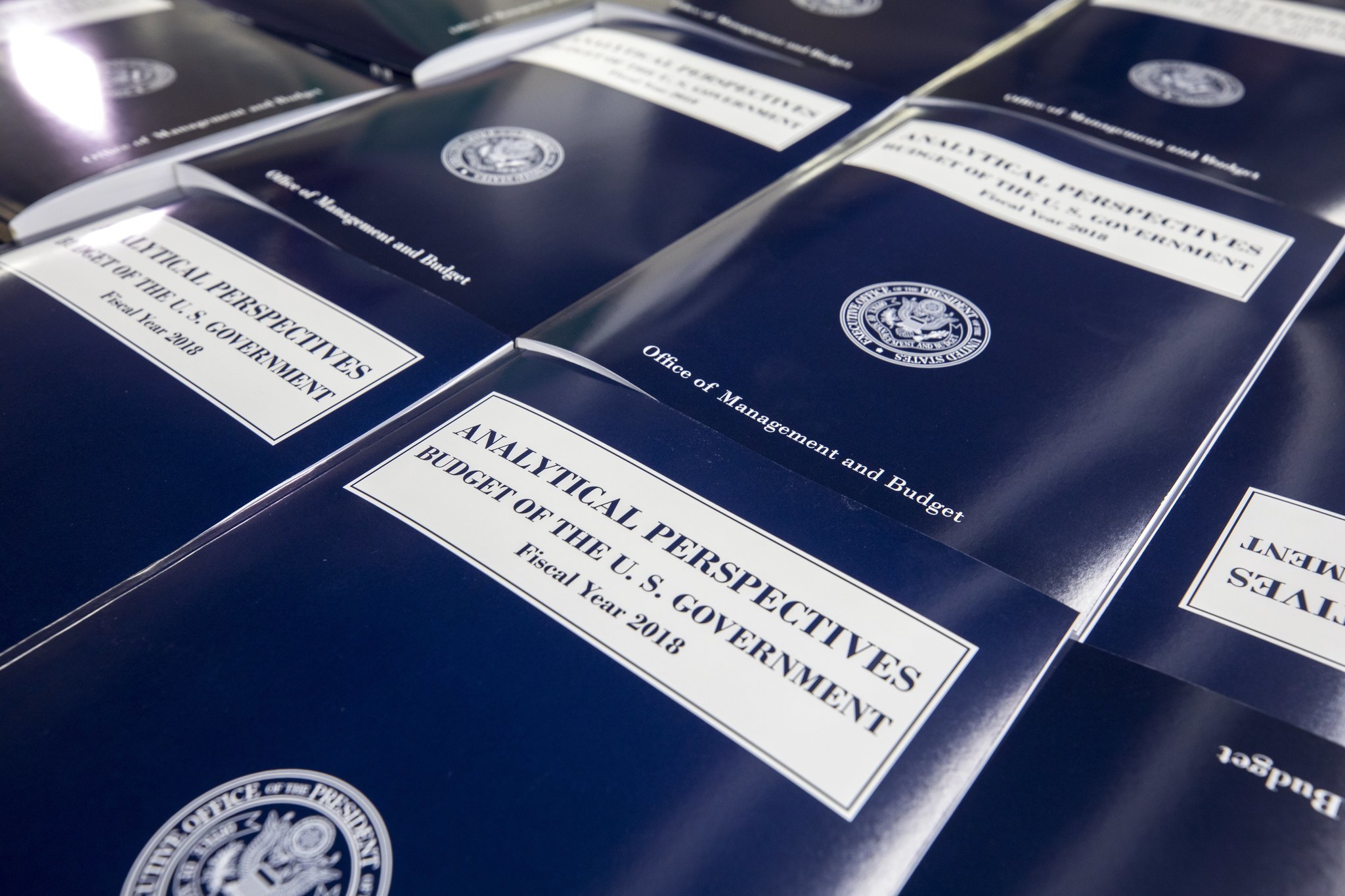 In early May, we recognized that your advocacy matters. Calls, letters, and visits from our members and arts and humanities supporters changed the fate of the NEA, the NEH, and the CPB for the remainder of the 2017 fiscal year. The federal agencies even got a little bump in funding.
In early May, we recognized that your advocacy matters. Calls, letters, and visits from our members and arts and humanities supporters changed the fate of the NEA, the NEH, and the CPB for the remainder of the 2017 fiscal year. The federal agencies even got a little bump in funding.
With the release of the more detailed White House FY2018 budget this morning, we now know that we at CAA, our members, and advocates for the arts and humanities must renew our efforts to fund these agencies through another fiscal year.
The proposed budget put forth by the White House is nothing short of a gutting of federal support for the arts and humanities. The proposed budget asks for $29 million for the NEA, $30.45 million for the CPB, and $42 million for the NEH. These sums are intended as wind-down amounts resulting in the shuttering of the agencies in 2019. Yet, these are only three agencies among a long list facing cuts under the Trump FY2018 budget. Arts education through the Department of Education is zeroed out and the IMLS would see a 90-percent drop in funding, from $231 million to 23 million in FY2018. Social services agencies assisting the financially insecure are some of the hardest hit with cuts.
Though these numbers are disheartening, we do know from our advocacy efforts on Capital Hill this year that the arts and humanities garner bipartisan support. Many of our elected officials understand the importance of these programs. They see the impact in their own districts through the work of non-profits, higher education institutions, and others who receive grants from the federal agencies.
But the fight is far from over.
Once again, it is imperative that all those who have been touched by the arts and humanities renew the fight to keep these agencies alive and thriving. We urge our members and supporters to make contact with your local representative and tell them the NEA, NEH, and CPB are an integral part of your lives and society.
If you would like to hear what Holly Hughes, one of the NEA Four thinks about the rationale for defunding the NEA, click here.
Use our toolkit to contact your local representative.
Read our March 16, 2017 Statement on the FY2018 skinny budget.
CAA Amicus Brief on Trump’s Travel Ban
posted by CAA — May 22, 2017
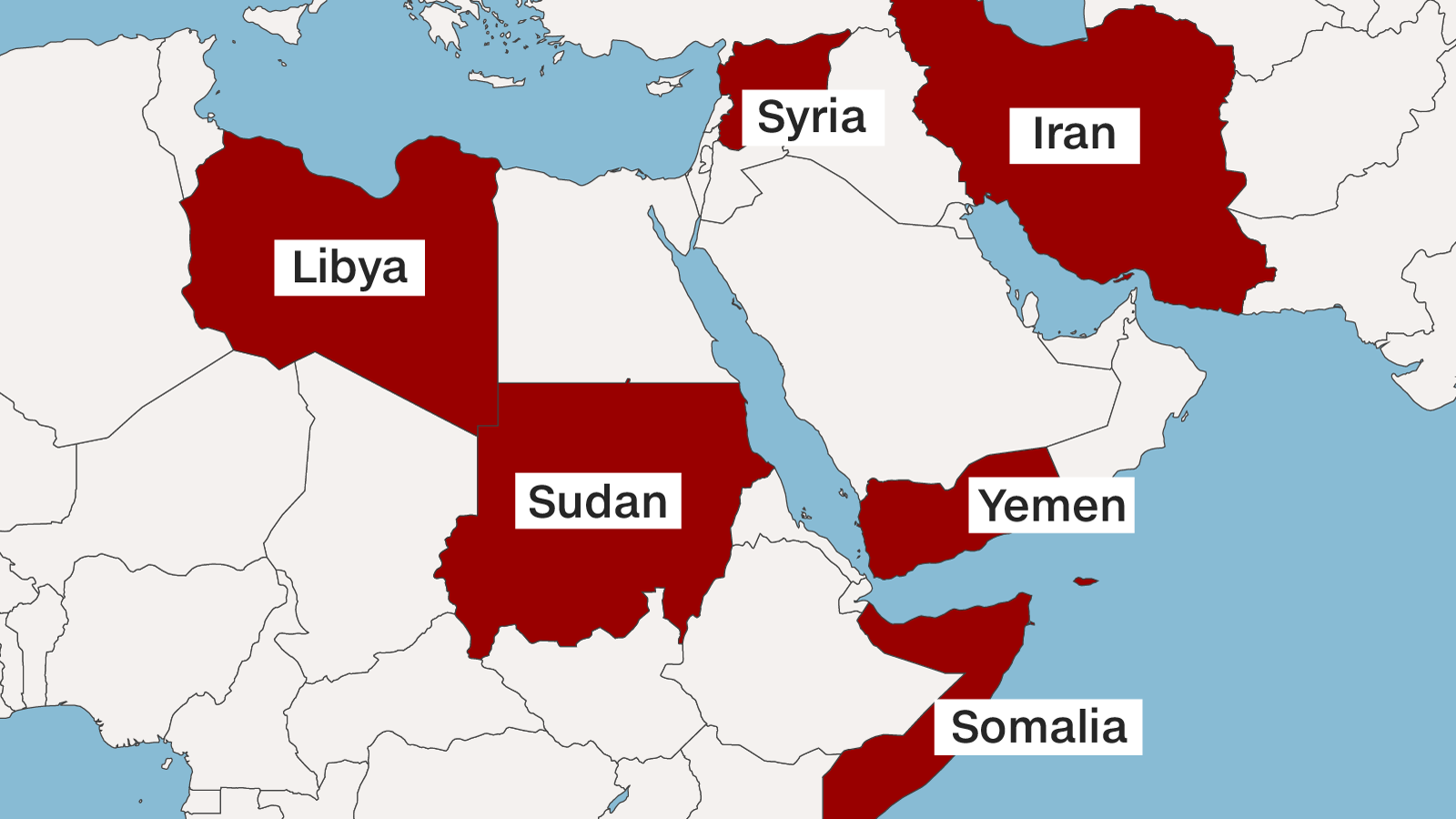 CAA added its name to two amicus briefs in opposition to the United States president’s travel ban, officially known as Executive Order 13,780. We joined the Association of Art Museum Directors and American Alliance of Museums, along with ninety-four art museums. The cases are: International Refugee Assistant Project v. Donald J. Trump in the United States Court of Appeals for the Fourth Circuit; and State of Hawaii and Ismail Elshikh v. Donald J. Trump in the United States Court of Appeals for the Ninth Circuit.
CAA added its name to two amicus briefs in opposition to the United States president’s travel ban, officially known as Executive Order 13,780. We joined the Association of Art Museum Directors and American Alliance of Museums, along with ninety-four art museums. The cases are: International Refugee Assistant Project v. Donald J. Trump in the United States Court of Appeals for the Fourth Circuit; and State of Hawaii and Ismail Elshikh v. Donald J. Trump in the United States Court of Appeals for the Ninth Circuit.
The brief argues that the travel ban inhibits the work of museums. “The negative effects of the Order are already being felt,” the document reads, “as several museums have postponed or canceled future exhibitions that require foreign artists, lenders, collectors, curators, scholars, couriers, and others whose ability to contribute can no longer be assured.” Specific examples include the Cleveland Museum of Art, which canceled a music performance, and the Museum of Fine Arts, Houston, which has doubts about securing loans for an exhibition of Persian art.
We consider joining this amicus brief as inherent to our advocacy efforts and our international reach at CAA. The travel ban impacts the international attendees of our Annual Conference, it impinges on the flow of information and discussion between colleagues, and it harms the practice of research more broadly.
New in caa.reviews
posted by michaelh — May 19, 2017
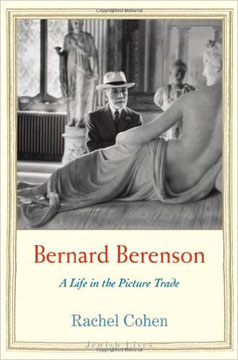 Ralph Lieberman reads Bernard Berenson: A Life in the Picture Trade by Rachel Cohen, “part of a Yale series of biographies entitled Jewish Lives.” In this “clear, concise, and gracefully written retelling of” Berenson’s life, the author “deals well with his contradictory attitudes and conversions from Judaism, but it is difficult to determine from her text exactly what she thinks his Jewishness meant to him.” Read the full review on caa.reviews.
Ralph Lieberman reads Bernard Berenson: A Life in the Picture Trade by Rachel Cohen, “part of a Yale series of biographies entitled Jewish Lives.” In this “clear, concise, and gracefully written retelling of” Berenson’s life, the author “deals well with his contradictory attitudes and conversions from Judaism, but it is difficult to determine from her text exactly what she thinks his Jewishness meant to him.” Read the full review on caa.reviews.
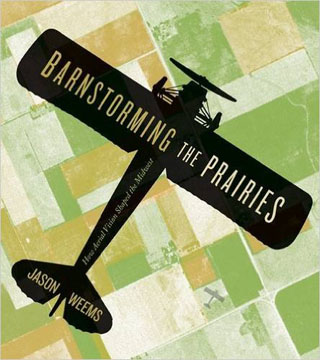 Mark White discusses Jason Weems’s Barnstorming the Prairies: How Aerial Vision Shaped the Midwest. Weems “provides an engaging and thoughtful analysis of how the elevated vantage point helped to create the modern Midwestern landscape and, in turn, informed the region’s identity.” Through case studies, he “explores how the aerial, synoptic view of the prairie fostered changes in the perception of that landscape.” Read the full review on caa.reviews.
Mark White discusses Jason Weems’s Barnstorming the Prairies: How Aerial Vision Shaped the Midwest. Weems “provides an engaging and thoughtful analysis of how the elevated vantage point helped to create the modern Midwestern landscape and, in turn, informed the region’s identity.” Through case studies, he “explores how the aerial, synoptic view of the prairie fostered changes in the perception of that landscape.” Read the full review on caa.reviews.
Gwendolyn Owns reviews the exhibition catalogue The Idea of the North: The Paintings of Lawren Harris. Organized by the Hammer Museum, the show “attempts to bring this star of Canadian art to the attention of a U.S. audience,” and “the beautifully produced catalogue . . . provides an in-depth examination of one brief period in the artist’s career” and “is a worthy addition to the literature on him.” Read the full review on caa.reviews.
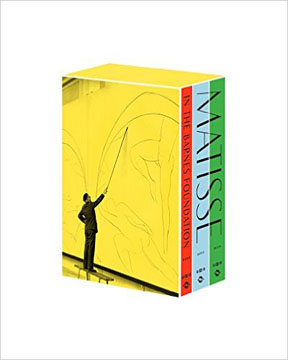 John Klein reviews Matisse in the Barnes Foundation, edited by Yve-Alain Bois. The volume reproduces and catalogues “every one of the Barnes Foundation’s fifty-nine artworks by Matisse” and “goes further,” providing correspondence, “three intellectually stimulating thematic essays,” and a “wealth of historical, biographical, artistic, and historiographic information derived from scrupulous research.” Read the full review on caa.reviews.
John Klein reviews Matisse in the Barnes Foundation, edited by Yve-Alain Bois. The volume reproduces and catalogues “every one of the Barnes Foundation’s fifty-nine artworks by Matisse” and “goes further,” providing correspondence, “three intellectually stimulating thematic essays,” and a “wealth of historical, biographical, artistic, and historiographic information derived from scrupulous research.” Read the full review on caa.reviews.
CAA Fair-Use Events in Los Angeles and Saint Louis
posted by CAA — May 19, 2017
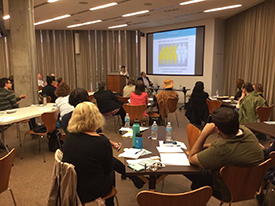
A scene from the fair-use workshop at the UCLA Library (photograph by Sharon E. Farb)
On May 5, 2017, CAA hosted “Fair Use and the Visual Arts,” a presentation and panel discussion at the UCLA Library. The event was made possible by a grant from the Andrew W. Mellon Foundation. Speakers on the panel included Peter Jaszi, the lead investigator on the CAA Code of Best Practices in Fair Use in the Visual Arts and Professor at American University Washington College of Law in the Program on Information Justice and Intellectual Property, and Janet Landay, Program Manager of the Fair Use Initiative at CAA. The pair, who have given presentations across the U.S. and internationally as part of the CAA Fair Use Initiative, talked about why it was important for CAA to undertake the project, their methodology, and the resulting Code of Best Practices in Fair Use for the Visual Arts.
The second half of the event was devoted to a Q&A with the audience of approximately fifty-five people. Question topics ranged from addressing the issue of how the size at which an illustration is produced impacts fair use to indicating in a caption or illustration credits section that I am claiming fair use in the reproduction of an illustration.
A second discussion on CAA’s Fair Use Initiative took place at the American Alliance of Museum’s 2017 Annual Meeting and MuseumExpo in Saint Louis, Missouri. The panel discussion, titled “Copyrighted Material in the Museum: A Path to Fair Use,” took place on May 9. The panel brought together esteemed colleagues from the museum and publishing worlds and was comprised of Patricia Fidler, publisher of art and architecture at Yale University Press; Anne Collins Goodyear, codirector of the Bowdoin College Museum of Art; Judy Metro, editor in chief for the National Gallery of Art; and Joseph Newland, director of publishing for the Menil Collection. Hunter O’Hanian, CAA executive director, was the chair and moderator.
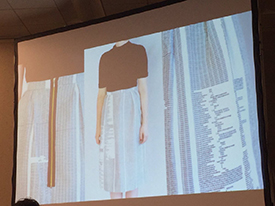
A presenter at AAM’s annual meeting discussed Andrea Wallace’s Still Life Pixel + Metadata Dress (photograph by Anne Young)
About seventy-five to one hundred people attended the standing-room only session and discussion revolved around fair-use issues for museums who want to use their own materials: catalogues, brochures, websites—even wall texts. A key takeaway from the session: museum representatives need to maintain good relations with donor and lenders, and getting approval from their own legal counsel, who tend to approach these matters with caution.
Later in the day Hunter O’Hanian spoke to faculty and students in the Department of Art History and Archaeology at Washington University in Saint Louis.
Learn more about the CAA Fair Use Initiative
Learn more about the 106th CAA Annual Conference in Los Angeles, February 21-24, 2018
GLOBAL CONVERSATIONS 2017
posted by CAA — May 18, 2017
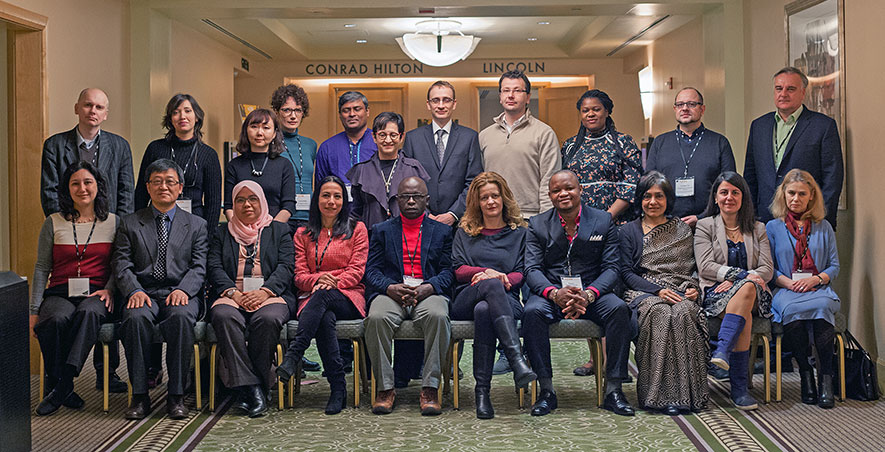
2017 CAA-Getty International Program Reunion Participants
Front row, left to right: Ana Mannarino (Brazil); Ding Ning (China); Sarena Abdullah (Malaysia); Rosa Gabriella Gonçalves (Brazil); Abiodun Akande (Nigeria); Sandra Uskokovic (Croatia); Hugues Heuman Tchana (Cameroon); Parul Mukerji (India); Ceren Ozpinar (Turkey); Irena Kossowska (Poland)
Second row, left to right: Nazar Kozak (Ukraine); Georgina Gluzman (Argentina); Shao Yiyang (China); Ljerka Dulibic (Croatia); Khademul Haque (Bangladesh); Janet Landay (CAA Program Director, USA); Richard Gregor (Slovakia); Davor Dzalto (Serbia); Portia Malatje (South Africa); Cristian Nae (Romania); Laris Boric (Croatia)
The following papers on international topics in art history were presented at four sessions during the 2017 Annual Conference. Organized to commemorate five years of the CAA-Getty International Program, each session includes five alumni scholars from around the world, joined by a distinguished scholar from the United States. The papers can be read in their entirety at the links below.
GLOBAL CONVERSATIONS I
Unsettling the Discipline: Decolonizing the Curriculum
Chair: Michael Ann Holly, Clark Art Institute
Decolonizing the Curriculum: Synthesizing “Multiple Consciousness” into the Art History Curricula of Nigeria and Ghana
Abiodun Akande, Emmanuel Alayande College of Education Oyo, Nigeria
The Emancipatory Potential of Karaman’s Concept of “Peripheral Art”: Still Operative?
Laris Borić, University of Zadar, Croatia
“Does this really matter?” Art History, Feminism, and Peripheral Positions
Georgina Gluzman, Universidad de San Andrés, Argentina
Decolonizing in the Age of Globalization: Experience of a Bangladeshi Art Historian
AKM Khademul Haque, University of Dhaka, Bangladesh
Dangers of Eurocentrism and the Need to Indigenize African and Grassfields Histories
Hugues Heumen Tchana, Higher Institute of the Sahel, University of Maroua, Cameroon
GLOBAL CONVERSATIONS II
Dominant Ideologies and Political Trauma: Can Art History Be Reborn?
Chair: Frederick M. Asher, University of Minnesota
After the Wall: Cultural Trauma and Methodological Challenges in Polish Art History
Irena Kossowska, Institute of Art, Polish Academy of Sciences/Nicolaus Copernicus University, Poland
How My Art History Was Reborn
Nazar Kozak, National Academy of Sciences of Ukraine
d.o.a.
Portia Malatjie, Goldsmiths, University of London (South Africa)
Visible and Invisible: How Art History Can Be Reborn from Dominant Ideology in China
Shao Yiyang, Central Academy of Fine Arts, Beijing, China
“Reconstructing” Art History
Sandra Uskoković, University of Dubrovnik, Croatia
GLOBAL CONVERSATIONS III
The Trouble with (The Term) Art
Chair: Mary Miller, Yale University
SENI MODEN as an Evolving Term and Practice in Malaysian Art
Sarena Abdullah, School of the Arts, Universiti Sains Malaysia
“When Did Beauty Become So F…n’ Ugly?” Troubles with Art and Its Functions
Davor Džalto, The Institute for the Study of Culture and Christianity, Belgrade/American Academy in Rome (Serbia)
Short Introduction on Applying the “Homonymic Curtain” to Recent Exhibitions
Richard Gregor, Trnava University, Slovakia
Art History and Cultural Hegemony in Brazil: the Risks of Misunderstanding Indigenous Art and Colonial Art
Ana Mannarino, Federal University of Rio de Janeiro, Brazil
Why Is the Miniature Painting Not History?
Ceren Özpınar, University of Sussex (Turkey)
GLOBAL CONVERSATIONS IV
Transnational Collaborations and Interdisciplinarity: Generating New Knowledge
Chair: David J. Roxburgh, Harvard University
Tracing the Transfer of Cultural Objects/Challenging the Burdens of the Past
Ljerka Dulibic, Croatian Academy of Sciences and Arts, Croatia
Aby Warburg and the Science Without a Name
Rosa Gabriella de Castro Gonçalves, Universidade Federal da Bahia, Brazil
Decolonizing Mimesis: Mad Metaphors and Slippery Similarities in a Classical Sanskrit Text on Painting
Parul Dave Mukherji, Jawaharlal Nehru University, India
Decolonizing Cartography? Visual Culture and the Poetics of Space in Critical Contemporary Art
Cristian-Emil Nae, George Enescu National University of Arts, Romania
Chinese Blue-and-White Porcelain in Western Painting
Ding Ning, Peking University, China


